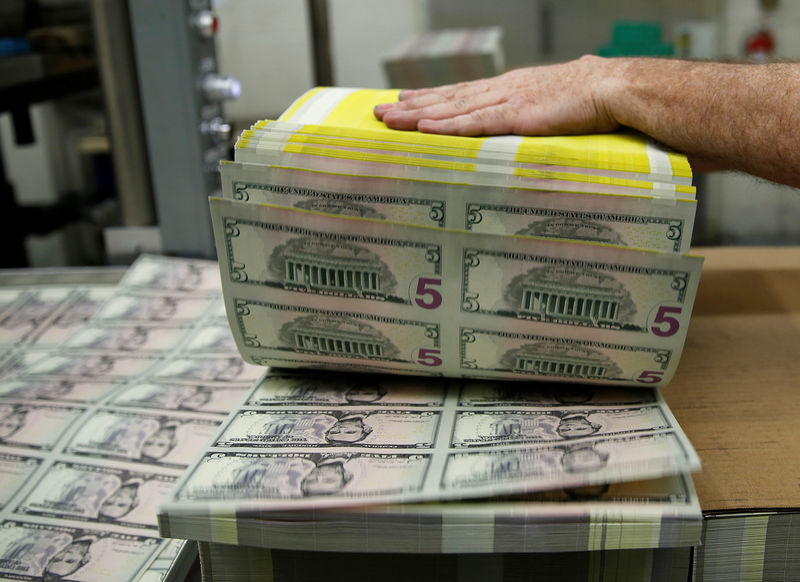* Yen soars to three-year high
* Euro jumps as U.S. yields crater
* Oil-exposed currencies plunge
* Graphic: World FX rates in 2020 https://tmsnrt.rs/2RBWI5E
By Tom Westbrook
SINGAPORE, March 9 (Reuters) - The dollar dived against the euro and yen on Monday as a slump in oil prices combined with coronavirus fears to drive U.S. yields to once-unthinkable lows.
Oil prices collapsed 30% after Saudi Arabia stunned markets with a pledge to slash prices and boost production following the collapse of an OPEC supply agreement. O/R
Panicked investors rushed to the safety of bonds, sending 30-year U.S. yields beneath 1% and 10-year yields under 0.5%, all but eliminating what was once the dollar's chief attraction. MTKS/GLOB
In hectic trade, it fell 3% against the yen to 101.58, its lowest in three years. The euro EUR= was last up 1% at $1.1408, while the Australian AUD=D3 and New Zealand NZD=D3 dollars were down close to 2% with the fearful mood.
"It is totally wild," said Shafali Sachdev, head of FX Asia at BNP Paribas (PA:BNPP) Wealth Management in Singapore. "Everyone has been expecting it for a while, but just the speed of the move has taken everyone by surprise," she said.
"This is not a train I want to be getting in front of, and how long it continues and where it goes from here is going to depend on how the situation evolves," she added, saying further stock falls could drive even more gains in funding currencies.
So far, the yen's rise has it headed for its largest three-day gain since the depths of the 2008 financial crisis. It is up 9.4% in a dozen trading days.
The gain has raised concerns among policymakers in Japan, where it is bad news for exporters, with a senior finance official telling warning authorities were closely watching trade. one point, the Aussie AUDJPY= was down 6% at an 11-year low against the yen while the Kiwi NZDJPY= fell more than 7%.
The number of people infected with the coronavirus has topped 107,000 across the world as the outbreak reached more countries and caused more economic disruption. fall in the oil price just comes at the worst time, or at least that's how financial markets are reading it," said Paul Mackel, head of emerging markets FX research at HSBC in Hong Kong.
"Volatility across assets is overshadowing any type of silver lining from a fall in the oil price," he said, adding it was hard to tell when fear and nerves would subside.
The Australian dollar last traded at $0.6540, having recovered from its drop to $0.6311, while the dollar last sat at a 17-month low against a basket of currencies =USD .
Meanwhile, the oil price fall triggered withering sell-offs in oil exporters' currencies.
The Russian rouble RUB= and Mexican peso MXN= each fell as much as 6% against the dollar. The Norwegian krone NOK=D3 shed 3% to hit a record trough. The Canadian dollar CAD=D3 fell 1.6% to 1.3640 per dollar, its lowest since 2017.
